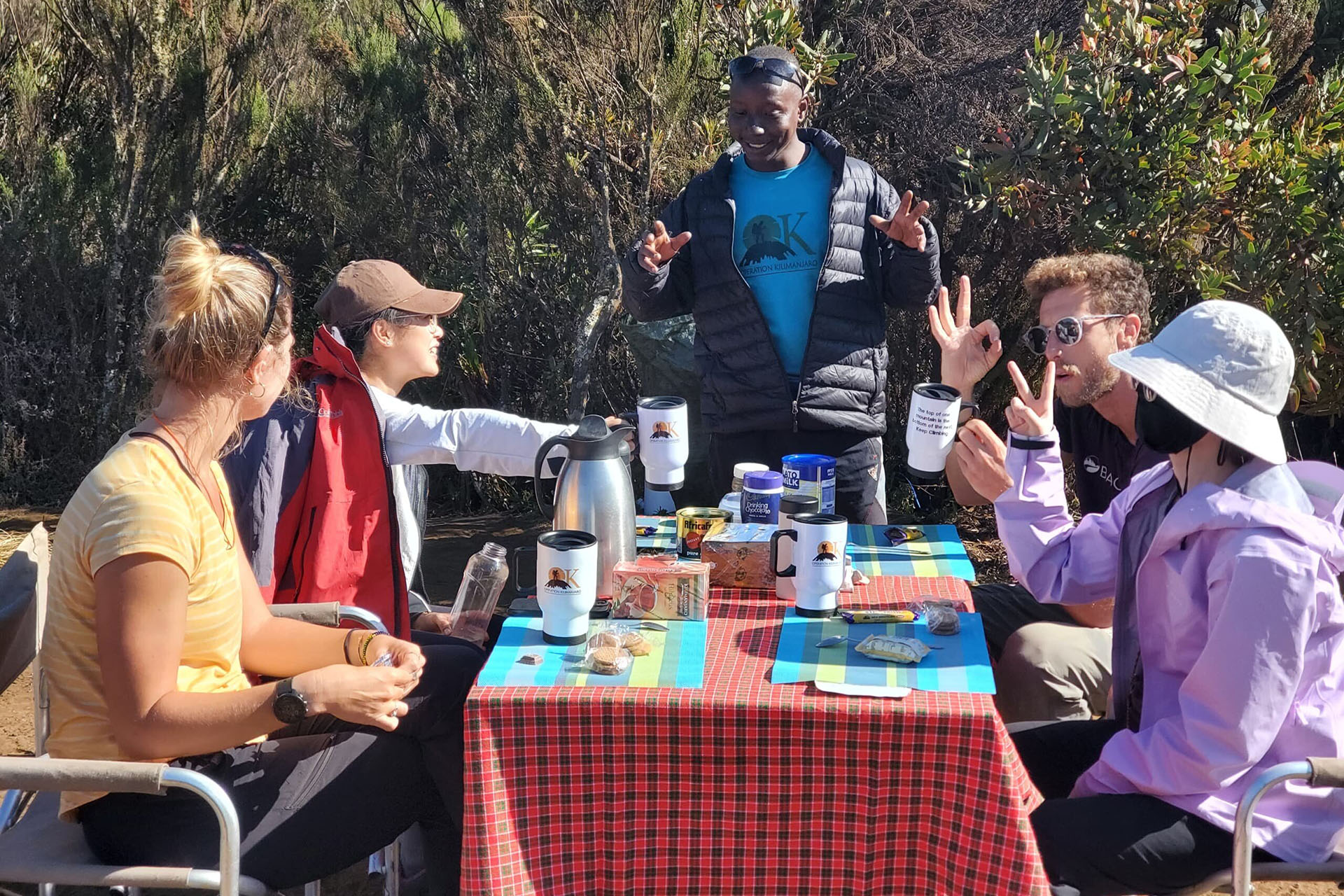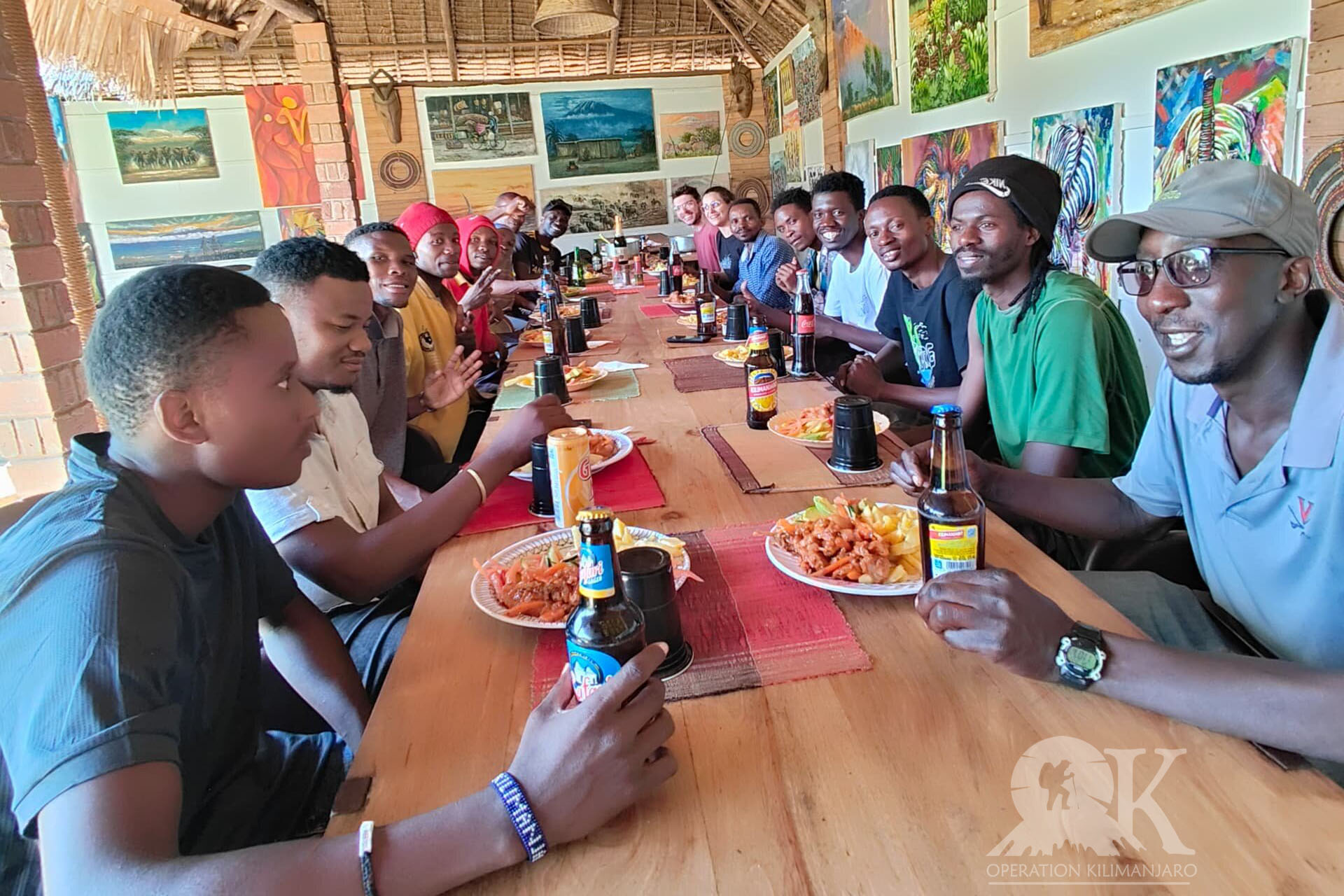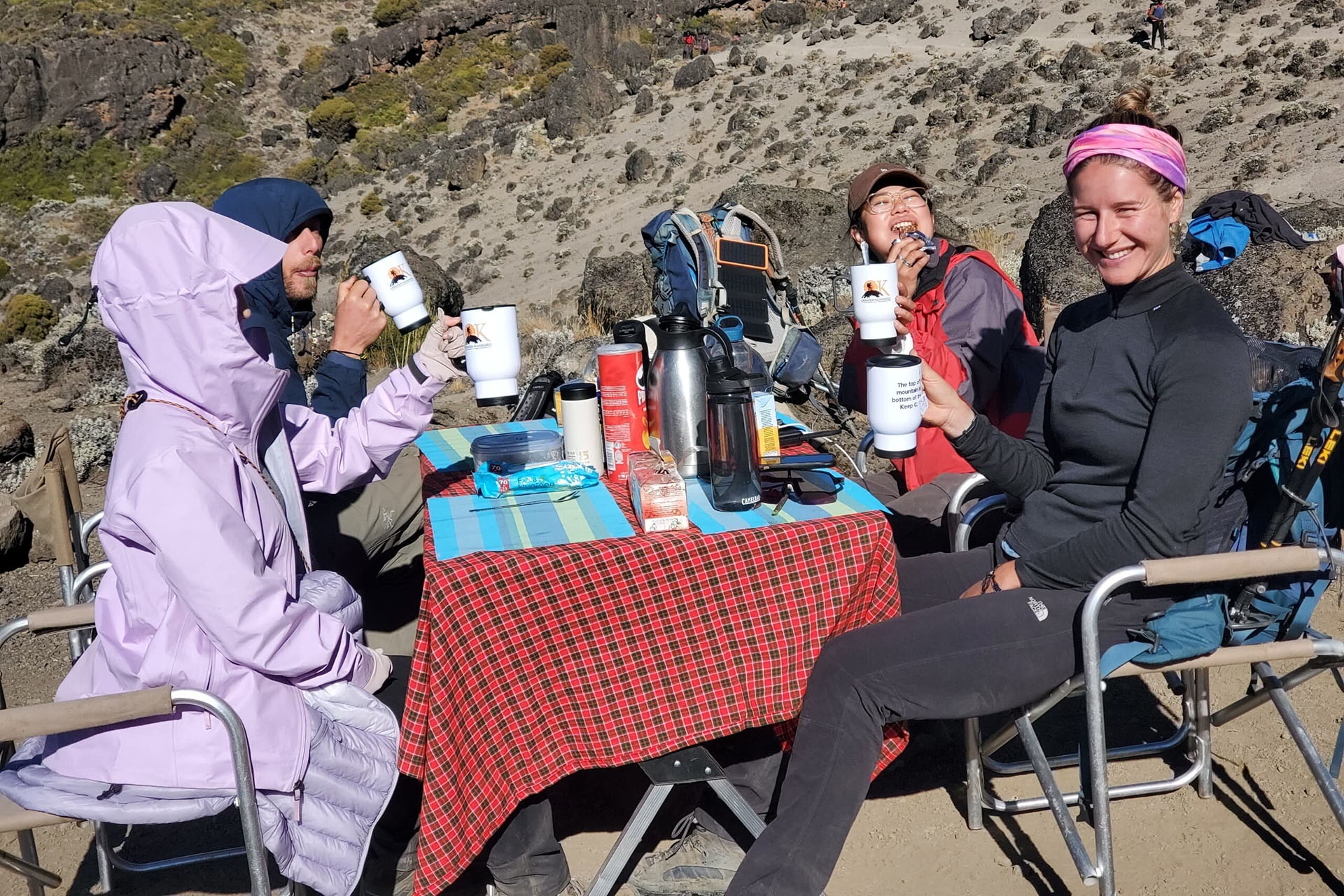FOOD ON MT. KILIMANJARO
Climbing Mount Kilimanjaro is a physically demanding adventure, and proper nutrition is crucial for maintaining your energy levels and helping your body cope with the altitude. Thankfully, most trekking companies provide well-balanced and nutritious meals designed to fuel climbers for the strenuous hike. Here’s what you can expect when it comes to food on Mount Kilimanjaro.
Meal Preparation and Dining Setup
Treks up Kilimanjaro are supported by a team of professional cooks and porters who carry fresh ingredients and cooking equipment. Meals are typically prepared in a dedicated mess tent, where climbers gather for breakfast, lunch, and dinner. The food is designed to be high in carbohydrates and protein to sustain energy and keep trekkers warm in the cold conditions.
While food variety may be more limited at higher elevations due to storage constraints, cooks strive to prepare delicious, fresh, and nutritious meals throughout the trek. Water is also provided, usually purified or boiled, ensuring safe hydration.

Sample Daily Meal Plan
Here’s an overview of what a typical day’s meals might look like on Kilimanjaro:
Breakfast (Fuel for the Day)
Mornings on the mountain are cold, so breakfast is hearty and warm to help climbers start their day with energy. A typical breakfast includes:
- Porridge (oatmeal, millet, or corn porridge)
- Toast with butter, jam, or honey
- Eggs (boiled, fried, or scrambled)
- Pancakes or crepes
- Sausages
- Fresh fruits (bananas, oranges, watermelon)
- Tea, coffee, or hot chocolate
Breakfast provides a good mix of carbohydrates and proteins to sustain energy levels for the long hike ahead.
Lunch (Midday Energy Boost)
Lunch can be either a hot or packed meal, depending on the day’s schedule. If hiking continues through lunch, trekkers will have a packed meal, but if time allows, they will enjoy a hot meal in a camp setting.
A typical lunch might include:
- Sandwiches with cheese, eggs, or peanut butter
- Vegetable soup with bread
- Fried chicken or beef
- Rice, pasta, or potatoes
- Fresh vegetables like cucumbers, carrots, and tomatoes
- Juice or tea
This meal is lighter than dinner but provides enough energy to keep hikers going for the rest of the day’s trek.
Afternoon Tea (Snack and Hydration Break)
After reaching the campsite in the afternoon, climbers are usually served tea or coffee with snacks to warm up and replenish energy. Options include:
- Popcorn
- Biscuits or cookies
- Peanuts or cashews
- Crackers with jam or honey
This is a relaxing break before the main evening meal.
Dinner (Hearty and Filling to End the Day)
Dinner is the biggest meal of the day, designed to replenish calories burned during the hike and prepare the body for rest. A typical dinner consists of:
- Soup (pumpkin, carrot, tomato, or vegetable)
- Rice, spaghetti, or mashed potatoes
- Beef or chicken stew
- Cooked vegetables (cabbage, spinach, or carrots)
- Chapati (flatbread) or ugali (a maize-based dish)
- Fruits for dessert
- Tea, coffee, or hot chocolate
A warm and filling meal helps maintain body temperature and strength for the next day’s hike.
Special Dietary Needs
Most trekking companies accommodate dietary preferences and restrictions, including vegetarian, vegan, gluten-free, and other special diets. It’s essential to inform your tour operator in advance about any dietary requirements so they can plan accordingly.
Common substitutions include:
- Vegetarians: More beans, lentils, eggs, and vegetables instead of meat.
- Vegans: Plant-based protein sources like beans, lentils, nuts, and vegetable stews.
- Gluten-Free: Rice, potatoes, and maize-based dishes instead of bread and pasta.
Hydration: Staying Safe at High Altitudes
Hydration is critical on Kilimanjaro to prevent altitude sickness and maintain energy levels. Climbers drink around 3–4 liters of water daily, provided by the trekking team. Water is typically boiled and purified before consumption.
Additional beverages include:
- Herbal teas (ginger tea is popular for altitude sickness relief)
- Fresh fruit juices (at lower altitudes)
- Hot chocolate for warmth and energy
Snacks: What to Bring from Home
While the meals provided are sufficient, many climbers bring extra snacks for quick energy boosts during the trek. Recommended snacks include:
- Energy bars or protein bars
- Dried fruits (dates, raisins, apricots)
- Nuts (almonds, cashews, peanuts)
- Dark chocolate for extra calories
- Electrolyte powder for hydration support
Bringing personal snacks ensures you have familiar comfort foods and extra energy for tough hiking days.
Challenges of Cooking on Kilimanjaro
Preparing meals at high altitudes is not easy, and cooks face several challenges, including:
- Limited ingredients: Fresh food must be carried up the mountain and stored properly.
- Cooking in low oxygen: Water boils at a lower temperature, making it harder to cook some foods.
- Harsh weather conditions: Wind, rain, and cold temperatures can affect meal preparation.
Despite these challenges, Kilimanjaro cooks are highly skilled and experienced in providing delicious and nutritious meals throughout the trek.


